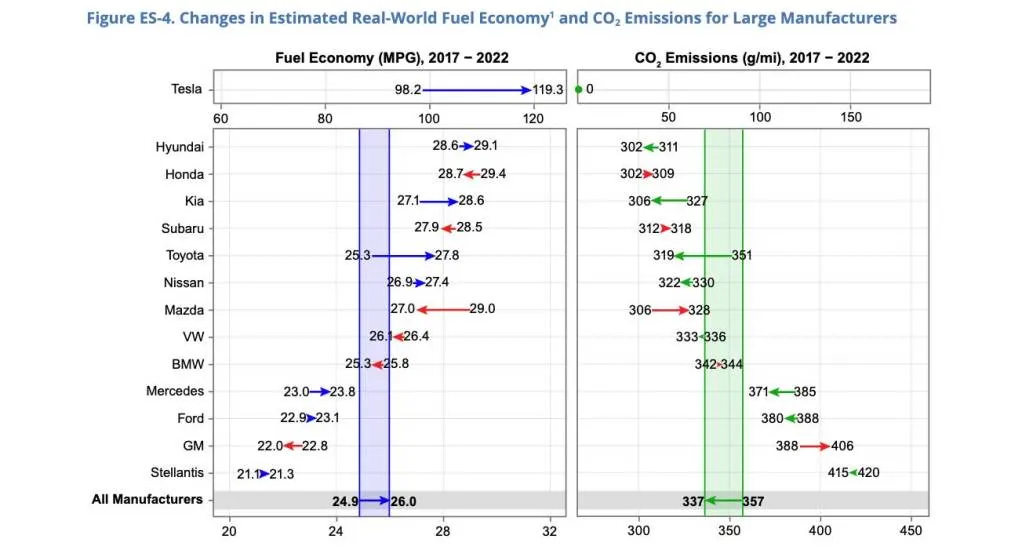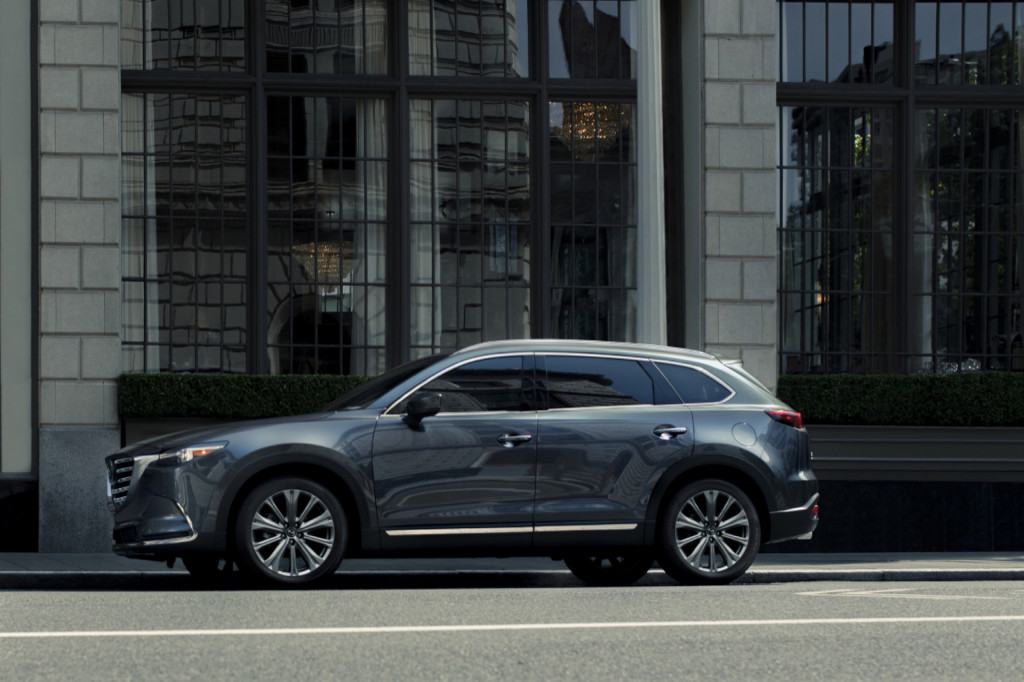

EPA: Hybrids and EVs helped offset more polluting trucks and SUVs
Increased production of hybrids and EVs has helped offset the shift toward larger vehicles in the new-car market, according to a comprehensive annual update from the EPA.
The 2023 EPA Automotive Trends Report, released last week, showed that automakers significantly ramped up hybrid and EV sales from model years 2017 to 2022. During that time, average fuel economy for manufacturers’ fleets also increased from 24.9 mpg for the 2017 model year to 26.0 mpg for 2022, according to the report, with carbon dioxide emissions decreasing from 357 grams per mile for 2017 to 337 g/mi for 2022.
The 2022 model year also saw hybrids reach an all-time high of 10% of new-vehicle production, the report said, although mild hybrids represented 41% of that total. And the auto industry’s shift toward less-efficient SUVs and pickup trucks as a greater part of the new-vehicle mix has been consistent throughout.

Changes in real-world fuel economy and emissions for model years 2017 to 2022 (via EPA)
Several automakers saw an increase in fleet emissions during the 2017 to 2022-model-year period, with Mazda seeing the biggest increase at 22 g/mi. That was due to a shift from 29% to 85% SUV production, according to the report, along with increased emissions from remaining sedan and hatchback models.
General Motors had the second-largest increase in emissions at 17 g/mi, followed by Honda at 7 g/mi. Tesla, meanwhile, reported net negative emissions by claiming “air conditioning and off-cycle credits” on top of its all-electric vehicle lineup.
The Biden administration is currently in the process of drafting new emissions rules for model years 2027 to 2032 (current emissions rules cover the period through the 2026 model year). EVs are not mandated under the proposed new rules, but they definitely help as requirements tighten and credit options dwindle. The EPA has said the new rules could lead to 67% EV sales by the 2032 model year.

2022 Mazda CX-9
Most automakers have backed these tighter EPA rules, although GM has said it will have issues complying with the targets. That’s despite GM’s previously expressed “aspiration” to make its passenger-vehicle fleet all-electric by 2035.
If the new emissions rules are enacted—or if automakers like GM follow through with promises for vastly greater EV production—one next step might potentially be incentivizing more efficient EVs. If most new cars are electric, emphasizing efficiency will still be important for keeping the overall carbon footprint of the vehicle fleet low. But until the current trend toward gasoline SUVs and trucks ebbs, that will be a secondary concern.
—
UPDATED: An earlier version of this story switched the CO2 emissions levels for 2017 and 2022. Carbon dioxide emissions are of course lower as fuel economy averages have risen.
Add a comment Cancel reply
Related posts


DOE: Pickups could save the most on fuel as EVs vs. gasoline











